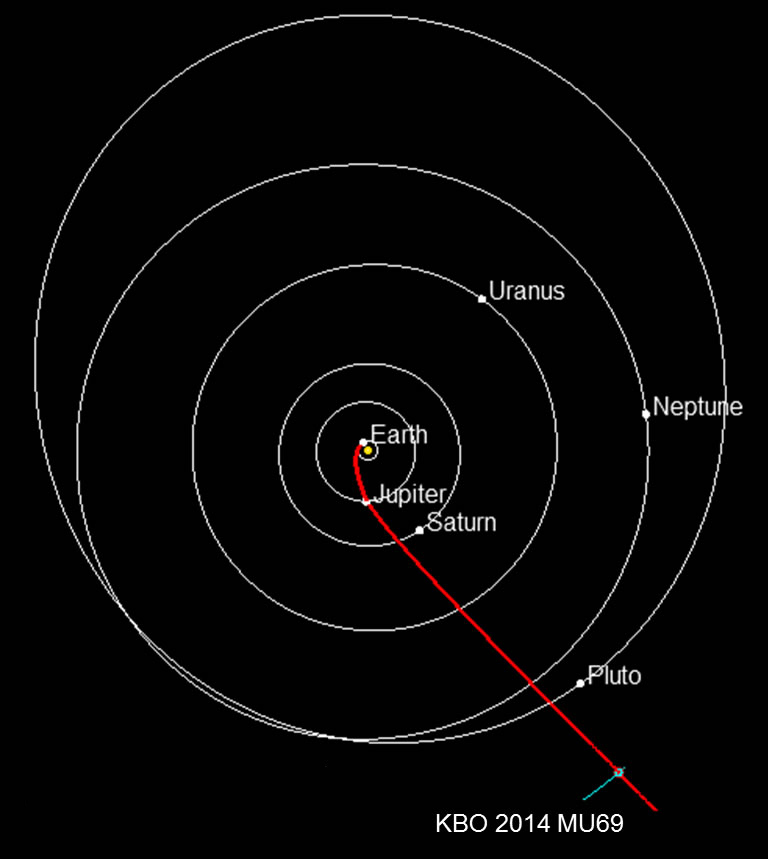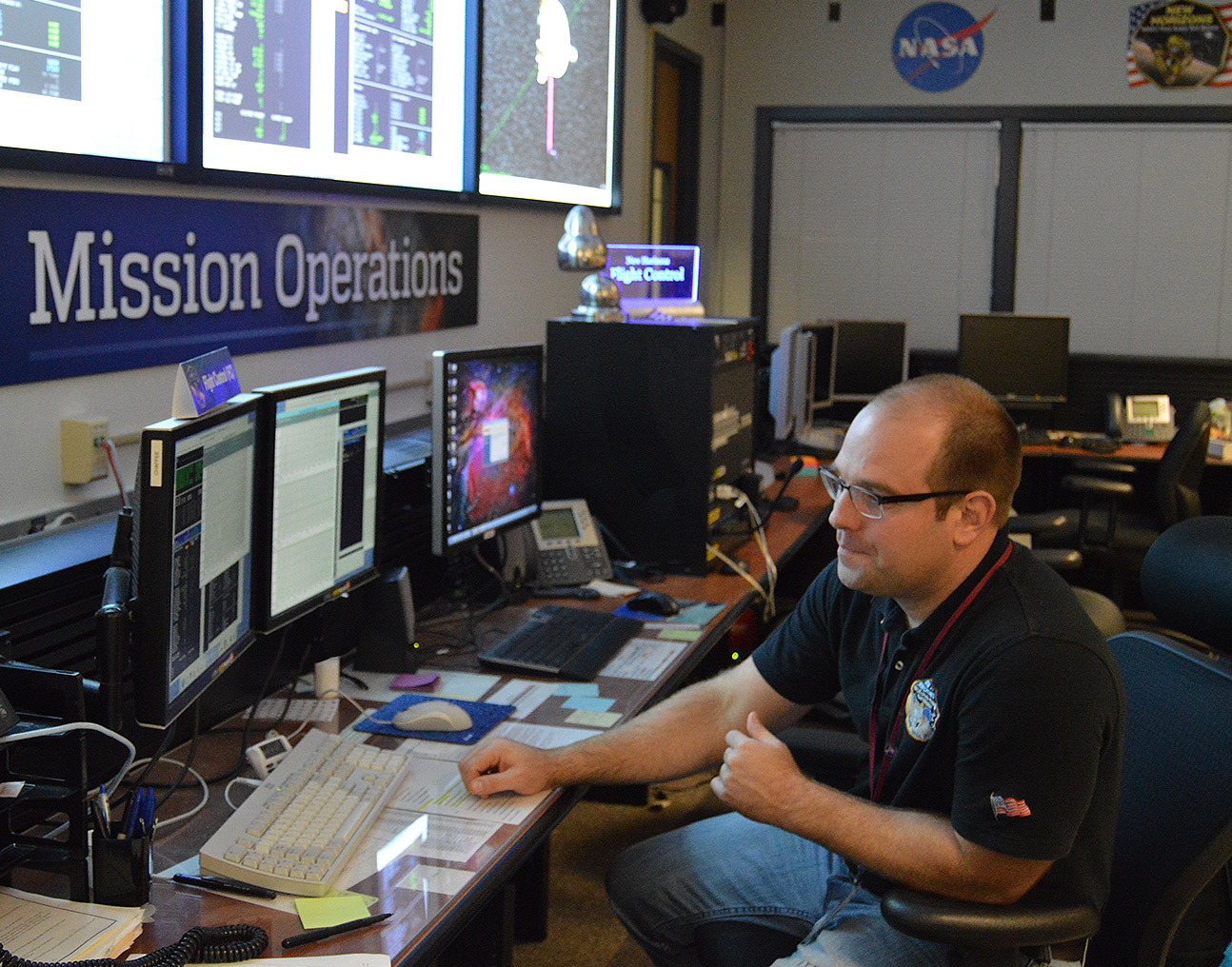Press Release
NASA’s New Horizons Completes Record-Setting Kuiper Belt Targeting Maneuvers
NASA’s New Horizons spacecraft has successfully performed the last in a series of four targeting maneuvers that set it on course for a January 2019 encounter with 2014 MU69. This ancient body in the Kuiper Belt is more than a billion miles beyond Pluto; New Horizons will explore it if NASA approves an extended mission.
The four propulsive maneuvers were the most distant trajectory corrections ever performed by any spacecraft. The fourth maneuver, programmed into the spacecraft’s computers and executed with New Horizons’ hydrazine-fueled thrusters, started at approximately 1:15 p.m. EST on Wednesday, Nov. 4, and lasted just under 20 minutes. Spacecraft operators at the Johns Hopkins University Applied Physics Laboratory (APL) in Laurel, Maryland, began receiving data through NASA’s Deep Space Network just before 7 p.m. EST on Wednesday indicating the final targeting maneuver went as planned.
The maneuvers didn’t speed or slow the spacecraft as much as they “pushed” New Horizons sideways, giving it a 57 meter per second (128 mile per hour) nudge toward the KBO. That’s enough to make New Horizons intercept MU69 in just over three years.
“This is another milestone in the life of an already successful mission that’s returning exciting new data every day,” said Curt Niebur, New Horizons program scientist at NASA Headquarters in Washington. “These course adjustments preserve the option of studying an even more distant object in the future, as New Horizons continues its remarkable journey.”
The New Horizons team will submit a formal proposal to NASA for the extended mission to 2014 MU69 in early 2016. The science team hopes to explore even closer to MU69 than New Horizons came to Pluto on July 14, which was approximately 7,750 miles (12,500 kilometers).
“New Horizons is healthy and now on course to make the first exploration of a building block of small planets like Pluto, and we’re excited to propose its exploration to NASA,” said New Horizons Principal Investigator Alan Stern, of the Southwest Research Institute in Boulder, Colorado.

